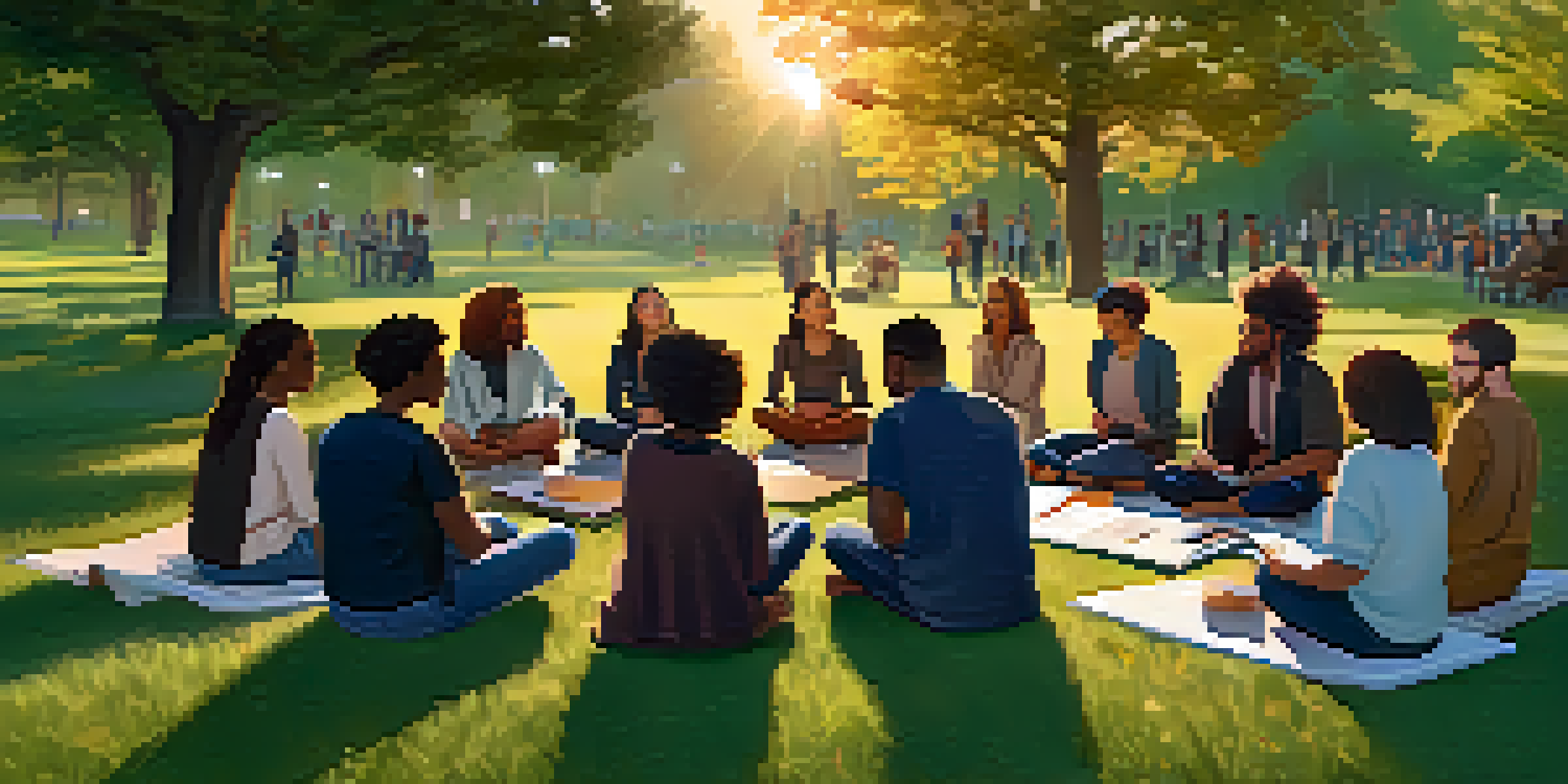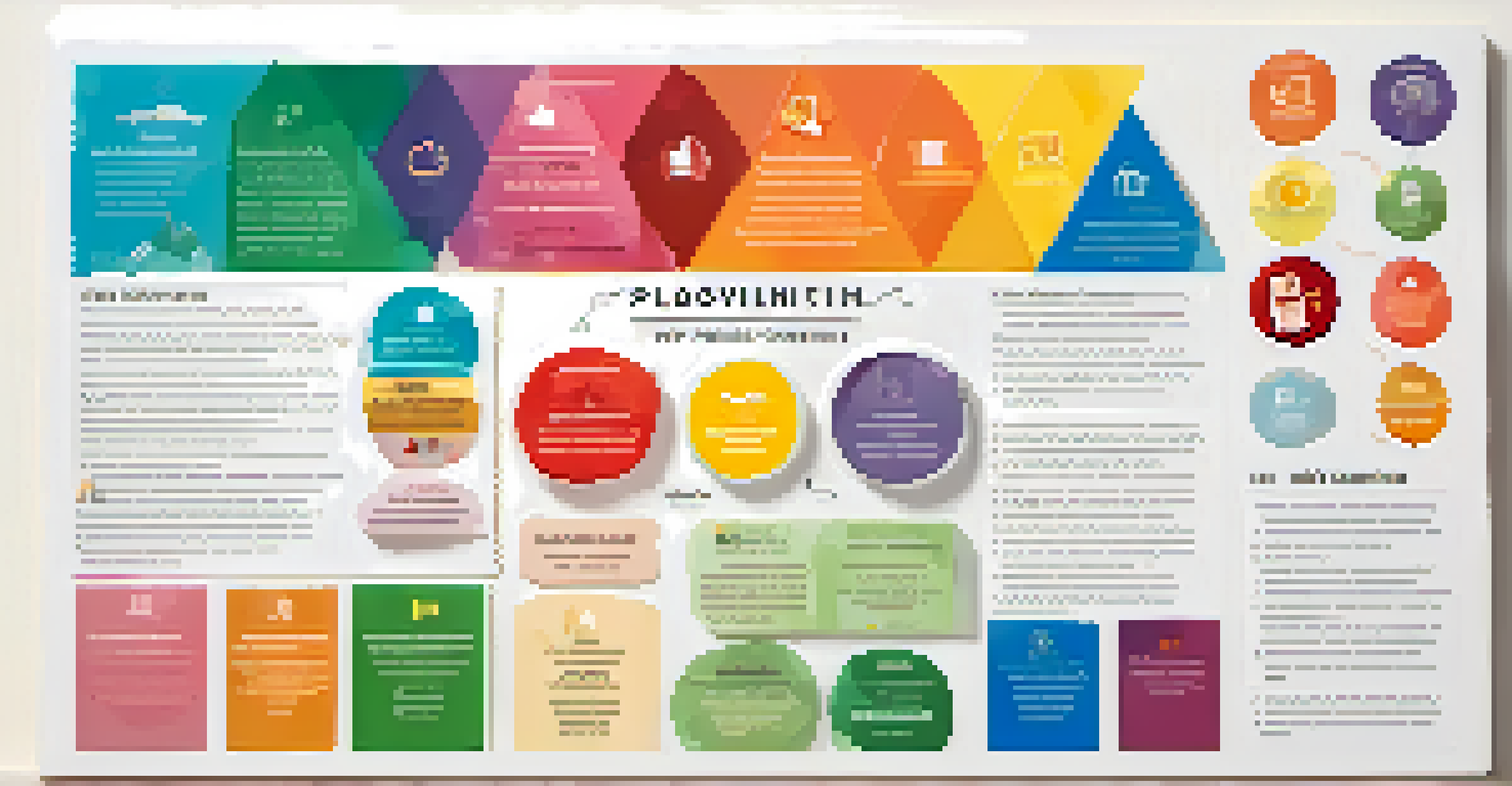Understanding Self Defense: The Role of Nonviolent Communication

What is Self Defense and Why It Matters
Self-defense is a crucial concept that goes beyond physical combat; it encompasses the ability to protect oneself from harm, both physically and emotionally. In today’s world, where conflicts can arise unexpectedly, understanding self-defense is vital for personal safety. This awareness empowers individuals to navigate potentially dangerous situations with confidence and resilience.
The greatest weapon against stress is our ability to choose one thought over another.
Moreover, self-defense isn't just about fighting back; it’s also about preventing conflict before it escalates. Many people overlook the importance of verbal skills in self-defense, focusing solely on physical techniques. However, the ability to communicate effectively can often diffuse a situation before it becomes dangerous.
Ultimately, learning about self-defense equips individuals with the tools to manage threats, ensuring their well-being in various environments. It’s not just about responding to aggression but also about understanding how to avoid it whenever possible.
Introduction to Nonviolent Communication
Nonviolent Communication (NVC) is a communication method developed by psychologist Marshall Rosenberg. It focuses on fostering empathy and understanding, allowing individuals to express their feelings and needs without resorting to aggression. By promoting compassionate dialogue, NVC plays a pivotal role in conflict resolution, making it a valuable tool in self-defense.

At its core, NVC encourages individuals to identify their emotions and needs while also considering those of others. This approach can transform potentially hostile situations into opportunities for collaboration and understanding. For example, instead of reacting defensively, a person trained in NVC might respond to a provocateur with curiosity, seeking to understand their perspective.
Self-Defense Beyond Physical Combat
Self-defense involves not only physical techniques but also the essential skills of communication and emotional intelligence to prevent and manage conflicts.
Incorporating NVC into self-defense training can change the way individuals interact in tense situations. By prioritizing communication, they can often prevent conflicts from escalating into physical confrontations.
The Connection Between NVC and Self Defense
The relationship between nonviolent communication and self-defense is profound. While traditional self-defense techniques often emphasize physical responses, integrating NVC helps individuals address the emotional undercurrents of conflict. This dual approach ensures that one is prepared not only to react physically but also to engage empathically.
In the midst of movement and chaos, keep stillness inside of you.
For instance, when encountering an aggressor, a person trained in NVC might first assess the situation verbally, diffusing tension through calm communication. This doesn’t mean avoiding confrontation; rather, it means prioritizing understanding to prevent escalation. Such strategies can lead to safer outcomes for everyone involved.
By blending NVC with self-defense education, individuals become more adaptable in handling various scenarios. They learn to read the emotional landscape of a situation, allowing them to respond appropriately and effectively.
Key Principles of Nonviolent Communication
NVC consists of four key components: observation, feelings, needs, and requests. First, individuals are encouraged to observe a situation without judgment, allowing them to assess facts neutrally. Following this, expressing feelings associated with the situation promotes emotional clarity, paving the way for deeper understanding.
Next, identifying underlying needs is essential. Needs reflect the core motivations behind feelings and behaviors, helping individuals recognize what drives their reactions. This process fosters empathy, both for oneself and for others, which is crucial in resolving conflicts peacefully.
NVC Enhances Conflict Resolution
Nonviolent Communication fosters empathy and understanding, allowing individuals to express their needs and feelings without aggression, which can defuse potentially dangerous situations.
Finally, making clear requests instead of demands encourages collaborative problem-solving. In a self-defense context, this could mean asking for mutual respect rather than threatening retaliation. Such communication can lead to more constructive outcomes and reduce the likelihood of physical altercations.
Practical Applications of NVC in Self Defense
Integrating NVC into self-defense can take many forms, from role-playing scenarios to real-life applications. For example, practicing how to articulate feelings during a confrontation can prepare individuals to respond effectively when tension is high. These exercises can build confidence, making it easier to stay calm and communicate during stressful encounters.
Another application is using NVC in conflict resolution workshops, where participants learn to express their needs clearly and listen to others. These skills are invaluable, especially in environments where misunderstandings can escalate into conflict. By fostering a culture of respect and understanding, communities can significantly reduce instances of violence.
Moreover, training programs that combine physical self-defense techniques with NVC principles can create well-rounded individuals capable of handling diverse situations. This holistic approach emphasizes that true self-defense encompasses both physical and emotional intelligence.
Challenges in Implementing NVC in Self Defense
While the benefits of integrating NVC into self-defense training are clear, challenges do exist. One significant hurdle is the ingrained societal belief that aggression is the primary response to threats. Overcoming this mindset requires a cultural shift towards valuing communication and empathy as essential tools for safety.
Additionally, individuals may struggle with vulnerability when expressing feelings or needs, especially in high-stress situations. It can be daunting to prioritize verbal communication when faced with aggression or hostility. Training programs must address these fears, providing supportive environments where individuals can practice and gain confidence.
Future of Self-Defense Training
The integration of Nonviolent Communication into self-defense training indicates a shift towards a more holistic approach, blending emotional intelligence with physical techniques for personal safety.
Finally, integrating NVC into traditional self-defense curricula requires skilled instructors who understand both physical techniques and the nuances of communication. Finding professionals who can effectively teach this dual approach may be challenging but is crucial for fostering comprehensive self-defense strategies.
The Future of Self Defense with Nonviolent Communication
As awareness grows about the significance of emotional intelligence in self-defense, the future of training programs may evolve dramatically. We may see an increasing number of workshops and courses that prioritize NVC alongside physical techniques, creating a more balanced approach to personal safety. This shift could empower individuals to handle conflicts with greater confidence and effectiveness.
Furthermore, technology may play a role in this evolution, with online platforms offering resources and training in both NVC and self-defense. Virtual simulations could allow learners to practice their skills in a safe environment, enhancing their ability to respond appropriately in real-life situations. Such advancements could make training more accessible and engaging.

Ultimately, the integration of NVC in self-defense training represents a progressive step towards holistic safety. By equipping individuals with both physical and emotional tools, we pave the way for a future where conflicts can be resolved through understanding rather than violence.